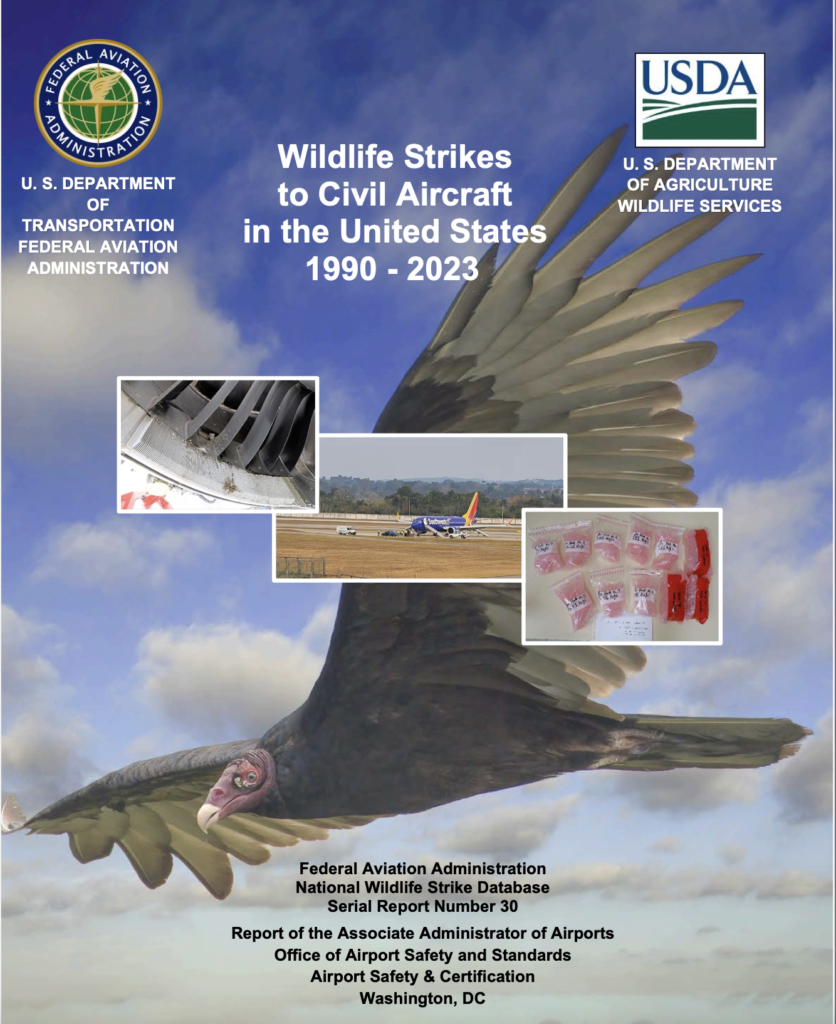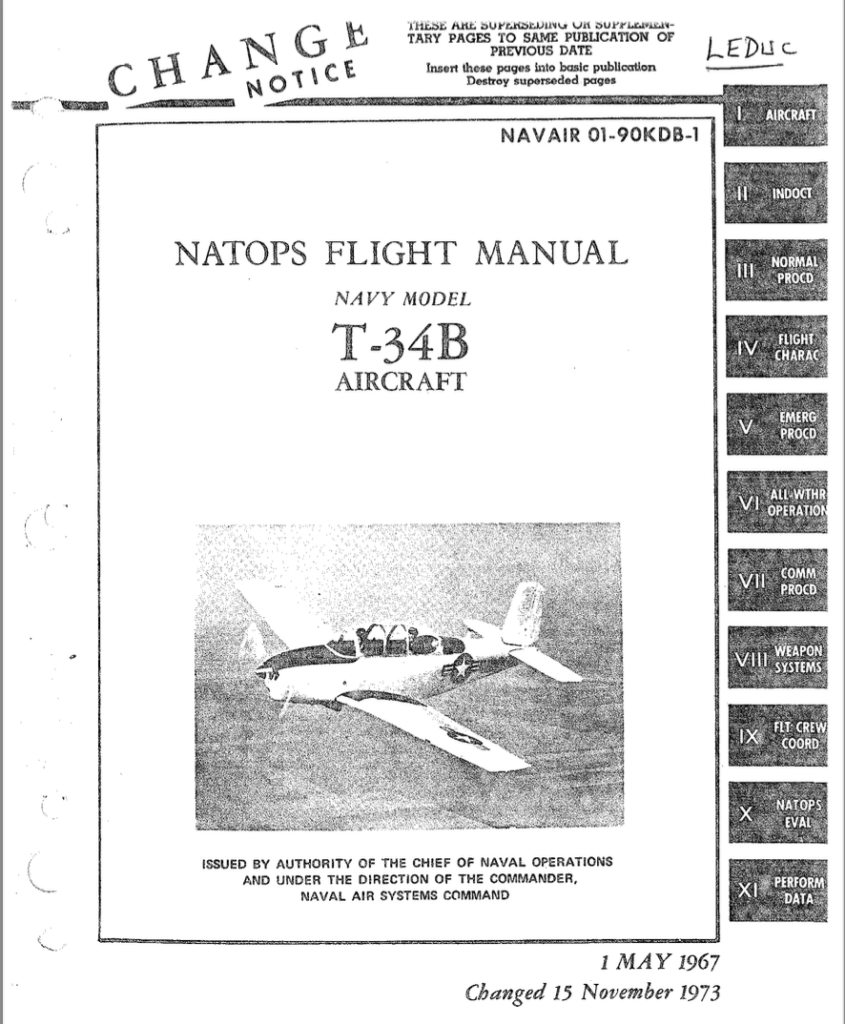
FLYING LESSONS uses recent mishap reports to consider what might have contributed to accidents, so you can make better decisions if you face similar circumstances. In most cases design characteristics of a specific airplane have little direct bearing on the possible causes of aircraft accidents—but knowing how your airplane’s systems respond can make the difference in your success as the scenario unfolds. So apply these FLYING LESSONS to the specific airplane you fly. Verify all technical information before applying it to your aircraft or operation, with manufacturers’ data and recommendations taking precedence. You are pilot in command and are ultimately responsible for the decisions you make.
FLYING LESSONS is an independent product of MASTERY FLIGHT TRAINING, INC.
Pursue Mastery of Flight™
This week’s LESSONS:
If a Bird Strikes
Bird strikes on airplanes in flight happen far more often than you might suspect. There have been several reported in the past few weeks. Most involve airliners…I expect the higher speed of jets makes damage more likely (and frightened birds less able to get out of the way) than in slower aircraft. Still, of the seven reported bird strikes in the past two weeks on the FAA preliminary report website, three involved general aviation airplanes: two Pilatus PC-12s, a Piper PA44 Seminole twin and a White Lightning high performance homebuilt.
The most recent update of the FAA’s Wildlife Strike Report tells us:
In 2023, 19,603 [wildlife] strikes were reported, an increase of 14 percent compared to…2022. The increase in reports was higher than the…increases in aircraft movements…. For the 34-year period (1990-2023) 296,613 strikes were reported of which 291,547 (98.3 percent) occurred in the USA…. Birds represent 95% of [these] strikes….

Far more data and information is there for the reading in this report.
What’s not mentioned is this: if you’re unfortunate enough to collide with a bird in flight, what might you do to test the airplane for damage you cannot see from the pilot’s seat? How can you evaluate the airplane’s capabilities with damage that might have occurred, visible or not?
The United States Navy publishes an inflight controllability check in what’s called the NATOPS: the Naval Air Training and Operations Standardization manual. In the event of inflight damage the NATOPS suggests:

B. Procedures (Controllability Check)
NOTE: Considerations for conducting a controllability check are: severity of damage/ malfunction, fuel remaining, flight conditions (VFR vs IFR), field landing facilities, other existing emergencies, and pilot experience.
- Climb as required, maintaining flying airspeed and proceed toward point of intended landing
- When possible, obtain a visual inspection by another aircraft to assist in evaluating the damage.
- Slow the aircraft to 200 KIAS in 10-KIAS increments
- Landing gear – DOWN
- Slow the aircraft in 5-KIAS increments; slow to an airspeed at which flight controllability starts to become marginal (no slower than optimum AOA).
- Increase airspeed 10 KIAS and use as a minimum airspeed for the duration of the flight.
If no damage is evident in the flap and slat area, extend the flaps to ½ then FULL and check controllability. If damage to slat area but nodamage to the flap area consider a no-flap arrested landing. However, if minimum airspeed is too high for landing, extend flaps with EMERGFLAPS switch. Flap extension is at pilot discretion.
Translating this for a control check in most FLYING LESSONS readers’ airplanes, I suggest adjusting (slightly) the Navy’s procedure thusly:
- Climb to a safe altitude as required, maintaining flying airspeed and proceed toward point of intended landing
- Landing gear – DOWN as applicable
- Slow the aircraft in 5-KIAS increments; slow to an airspeed at which flight controllability starts to become marginal (no slower than VX or optimum AOA).
- Increase indicated airspeed 30% (1.3 times minimum controllability speed) and use that as a minimum airspeed for the duration of the flight.
Land flaps up if practical. If unable to fly to a runway that permits a zero flaps landing, extend partial flaps and repeat the controllability check to determine a minimum safe partial flaps speed. Repeat the test once more at full flaps, if planning a full-flap landing.
If you ever experience a bird strike or other inflight damage, performing this procedure at altitude is a methodical way to determine if that damage has affected the controllability of the airplane before you begin slowing it close to the ground.
Questions? Comments? Supportable opinions? Let us know at [email protected].

Debrief
Readers write about past FLYING LESSONS
After recent LESSONS about preparing for undocumented emergencies, many readers focused on the specific systems of the Cessna 402 that served to instigate the discussion. Reader Jeff Dill promised to contact a relative who flies the 402 for the airline involved in our example mishap to see what that carrier might teach its pilots, and perhaps more information about what had happened and what the pilot had done. Here are the results:
The 402 landing gear cannot be retracted inflight once the Emergency gear extension T-Handle has been pulled. That is a Blow bottle I have always heard of forcing all the gear down in an event like this one. Retracting the gear was no longer on the table, it was a full hydraulic failure. I talked to a pilot about the bottle and they were finicky, Maintenance was working on another aircraft with “blowing the gear” with the T-Handle. A pilot overheard and asked to join the testing. He waited for the go ahead to pull the T-Handle and you can’t twist it or pull up, it’s a straight back movement. Pilot pulled and nothing happened, Maintenance said try again, nothing, tried again harder and nothing. Pilot pulled with a force that started bending the flight deck panel and nothing but another attempt the pilot recalled the slightest give in the 4th pull and the three wheels dropped.
Talking to the pilot from the [example] incident, he said he did all that and could recall panel bending too to get it down, but had no success. QRH [quick reation] checklist always ‘NOTEs” that you can never determine the condition of the gear with flybys and that they are dangerous but I’m sure the Pilot had an idea of his gear position. Also to yaw the plane to get gear down and locked.
The checklist states to crossfeed fuel from the retracted gear side of plane time permitting. Choose a favorable crosswind. Align aircraft toward runway edge opposite defective gear. Touchdown with operative gear first than lower nose gear immediately. Begin ground evacuation.
Ground evac starts with notifying ATC, time permitting. Positioning Aircraft in favorable wind. Throttles close, parking brake set, mixtures idle cutoff, battery off, magnetos off. The last few steps are if with passengers.
8. Advise passengers of exits to be used and assembly area.
9. Assist and direct evacuation
10. Remain with passengers in assembly area until relieved by station personnel.”
[The example] incident had one pilot and two passengers. One of the passengers was a Cape Air Ramp agent. Against the discussion I would say whether I climbed back to open the door main door past passengers or climbed out my pilot window to open the main door could be interpreted as abandonment either way at first glance. I would have told a specific passenger to open the door like my own coworker. But this particular incident was a low stress and more of an inconvenience to everyone. Not sure why he went to the back to open the door for people if that’s what he did.
Thank you, Daniel, for your insights into this mishap. And thank you, Jeff, for getting it for us.
More to say? Let us learn from you, at [email protected]

Share safer skies. Forward FLYING LESSONS to a friend.
Please help cover the ongoing costs of providing FLYING LESSONS through this
secure PayPal donations link. Or send a check made out to Mastery Flight Training, Inc. at 247 Tiffany Street, Rose Hill, Kansas USA 67133. Thank you, generous supporters.
Thank you to our regular monthly financial contributors:
Steven Bernstein, Montclair, NJ. Robert Carhart, Jr., Odentown, MD. Randy Carmichael, Kissimmee, FL. Greg Cohen, Gaithersburg, MD. John Collins, Martinsburg, WV. Dan Drew. Rob Finfrock, Rio Rancho, NM. Norman Gallagher. Bill Griffith, Indianapolis, IN. Steven Hefner, Corinth, MS; Ellen Herr, Ft Myers, FL. Erik Hoel, Redlands, CA. Ron Horton. David Karalunas, Anchorage, AK. Steve Kelly, Appleton, WI. Karl Kleiderer. Greg Long, Johnston, IA. Rick Lugash, Los Angeles, CA. Richard McCraw, Hinesburg, VT. David Ovad, Resiertown, MD. Steven Oxholm, Portsmouth, NH. Brian Schiff, Keller, TX. Paul Sergeant, Allen, TX. Ed Stack, Prospect Heights, IL; Paul Uhlig, Wichita, KS. Richard Whitney, Warrenton, VA. Jim Preston, Alexandria, VA. Johannes Ascherl, Munich, Germany. Bruce Dickerson, Asheville, NC. Edmund Braly, Norman, OK. Steven Hefner. Lorne Sheren, New Vernon, NJ. “The Proficient Pilot,” Keller, TX.
And thanks to these donors in 2024:
Jim Lara, Joseph Stadelmann, Dixon Smith, Barry Warner, Wayne Mudge, Joseph Vandenbosch, Ian Campbell, Jay Apt, John Kimmons, Derek Rowan, Michael Maya Charles, Ron Horton, Lauren McGavran, Gerald Magnoni, Amy Haig, Rod Partlo, Brent Chidsey, Mard Sasaki-Scanlon, SABRIS Aviation (Dave Dewhirst), Edmund Braly, Joseph Orlando, Charles Lloyd, Michael Morrow, Abigail Dang, Thomas Jaszewski Danny Kao, Gary Garavaglia, Brian Larky, Glenn Yeldezian, David Yost, Charles Waldrop, Robert Lough. Gilbert Buettner. Panatech (Henry Fiorientini). Dale Bleakney. Mark Kolesar. John Winter. Donald Bowles. David Peterson. Bill Abbatt. Bruce Jacobsen. Denny Southard. Wayne Cloburn. Ross Ditlove. “Bonanza User”
Pursue Mastery of Flight(TM)
Thomas P. Turner, M.S. Aviation Safety
Flight Instructor Hall of Fame Inductee
2021 Jack Eggspuehler Service Award winner
2010 National FAA Safety Team Representative of the Year
2008 FAA Central Region CFI of the Year
FLYING LESSONS is ©2024 Mastery Flight Training, Inc. For more information see www.thomaspturner.com. For reprint permission or other questions contact [email protected].

